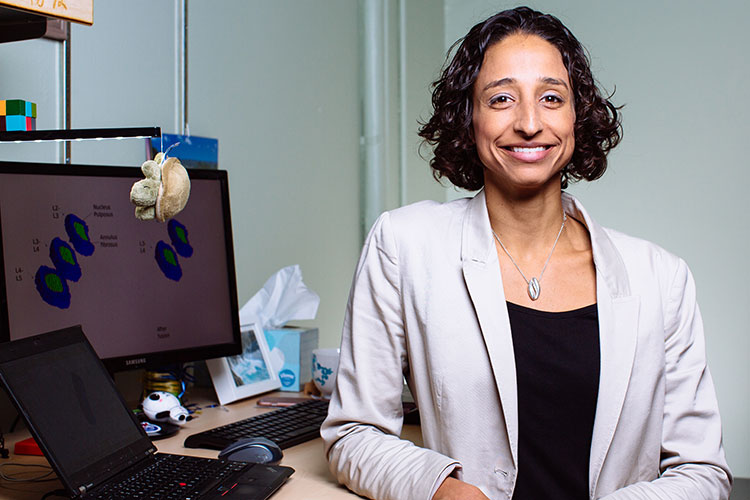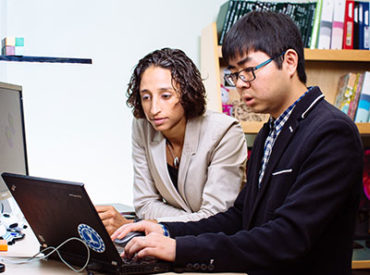Mechanical engineering to aid back surgery
With support from the Signatures Innovation Fellows program, mechanical engineering professor Grace O’Connell and graduate student Bo Yang are developing a model to help surgeons determine risks of surgery

February 23, 2018
Back pain is so common that some half a million Americans a year have surgery to treat the effects of disc degeneration, and others undergo less common surgical treatments.
And a surprisingly high percentage of patients eventually need a second surgery to repair damage caused by the first. Estimates of second surgery rates run as high as 30 percent.
The cause is often physics. Fusing disc together to treat degeneration changes the load distribution in the spine — and adds stress in certain areas. Increased stress means increased risk of fracture.
“… And there is no systematic way to predict which patients are most vulnerable,” says Grace O’Connell, assistant professor of mechanical engineering at UC Berkeley.
With support from the Signatures Innovation Fellows program, O’Connell and graduate student Bo Yang are developing a model to help surgeons determine an individual patient’s added risk and the best surgical strategy to reduce the risk. Their model aims to predict increases in stresses in the adjacent disc following fusion by using a patient’s CT or MRI scans.
Along with software engineer Nate Bartley, they are analyzing patient spine images and surgical results to strengthen the algorithm and allow surgeons to predict post-surgery fracture risk based on an individual patient’s spine alignment.
The Signatures Innovation Fellows program aids the potential business end of the project in practical ways, O’Connell says. In addition to consulting with venture capitalists, she and Yang are getting help reaching out to insurance companies in order to learn how they make decisions on reimbursements for new medical technologies.
Getting the technology into the real world could fill a need that surgeons readily recognize, O’Connell says.
“Surgeons agree that there are many variables that affect surgical success. For us to help them with two or three or four of those is a huge step.”
